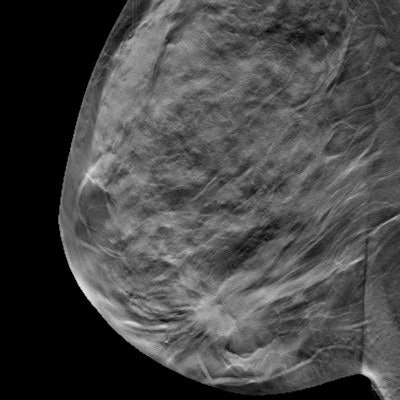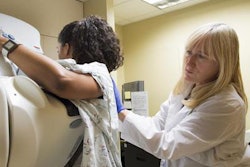
Digital breast tomosynthesis (DBT) found more than twice as many cancers as full-field digital mammography alone (FFDM) or a combination of the two technologies in a recent study, published online February 14 in the Journal of the American College of Radiology.
The findings offer further evidence that DBT is a viable screening modality, wrote a team led by Dr. Laila Cochon of Brigham and Women's Hospital in Boston.
"We found that compared with FFDM, DBT improves breast cancer detection in screening mammography, which more than doubled (2.6 versus 6 cancers per 1,000)," the group wrote. "Although overall recall rate did not change with DBT when compared with FFDM, even over time, an improvement in PPV1 [positive predictive value for number of cancers per number of recalls] reflects a reduction in unnecessary recalls."
Digital mammography can miss up to 30% of breast cancers -- a statistic that has prompted the search for better breast cancer screening technology, the team noted. Previous studies comparing FFDM to DBT have shown that DBT increases cancer detection rates and reduces recalls, but these studies haven't necessarily examined the use of DBT alone.
"Large studies comparing the efficacy of FFDM versus DBT demonstrate that DBT increases cancer detection rates ... and reduces recalls, but many of these studies were observational and occurred in mixed FFDM and DBT imaging environments, with the potential for selection bias among patients undergoing each technology," the authors noted.
Therefore, the researchers decided to compare differences in breast screening metrics in a large practice during three periods: an FFDM-only environment (pre-DBT), a hybrid DBT and FFDM environment, and a DBT-only environment.
The study included 179,028 screening mammograms acquired between January 2011 and December 2017. The group used electronic record data to glean patient demographic information and BI-RADS scores from each exam report; primary performance outcome measures were recall rate, cancer detection rate, and positive predictive value for screening recall (PPV1).
Of the 179,028 screening mammograms, 41,818 (23.3%) were FFDM only, 83,125 (46.4%) were FFDM/DBT, and 54,084 (30.2%) were DBT only. Cochon's group found that, with the exception of the recall rate, DBT demonstrated statistically significant screening performance improvements.
| Breast screening performance of FFDM alone, FFDM/DBT, and DBT alone | |||
| Performance measure | FFDM only | FFDM/DBT | DBT only |
| Cancer detection rate per 1,000 exams | 2.6 | 4.9 | 6 |
| Recall rate | 10.4% | 10.6% | 10.8% |
| PPV1 (No. of cancers per number of recalls) | 2.5% | 4.6% | 5.6% |
The fact that the recall rate remained stable across the three clinical environments but that the cancer detection rate and the PPV1 increased demonstrates DBT's efficacy as a breast cancer screening tool, according to Cochon and colleagues.
"Even without significant reduction in recall rate, the improvements in CDR and PPV1 demonstrate that DBT is a technological advance in breast cancer screening," the group concluded.



















